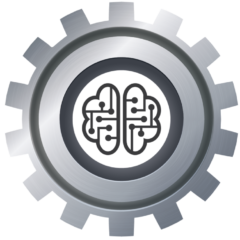Mental Maps – Neuro-Linguistic Programming
Mental maps are a key concept in neuro-linguistic programming (NLP), a psychotherapy approach that aims to help people change their behavior and thinking patterns by changing the language they use to describe their experiences. In NLP, mental maps refer to the subjective constructs that people create to make sense of their experiences. These maps are shaped by a variety of factors, including beliefs, values, and past experiences, and they can have a powerful influence on a person’s behavior and emotional well-being.
According to NLP, mental maps are not objective representations of reality but are instead subjective constructs that are shaped by our beliefs, values, and experiences. Our mental maps are made up of the sensory information that we take in through our senses and the meanings that we attach to that information. For example, if we see a snake, our mental map of snakes might include fear and anxiety, even if the snake is not actually dangerous.
NLP practitioners believe that by understanding a person’s mental maps, they can help them change their behavior and thinking patterns. This is done by using a range of techniques, such as language patterns, visualization, and modeling. NLP practitioners also use a range of tools, such as the “meta-model” and the “Milton model,” to help people communicate more effectively and achieve their goals.
One of the key techniques used in NLP to help people change their mental maps is reframing. Reframing involves changing the meaning of a situation by looking at it from a different perspective. For example, if someone is anxious about speaking in public, a NLP practitioner might help them reframe their anxiety as excitement, which can help them feel more confident and less anxious.
Another technique used in NLP to help people change their mental maps is visualization. Visualization involves creating mental images of a desired outcome, such as achieving a goal or overcoming a fear. By visualizing the desired outcome, people can create a new mental map that is more positive and empowering.
NLP also emphasizes the importance of language in shaping mental maps. Language can influence how people think and feel about a situation, and NLP practitioners use language patterns to help people change their mental maps. For example, NLP practitioners might use positive language to help someone develop a more positive outlook on life.
Despite its popularity, NLP has been the subject of controversy and criticism. Some critics argue that there is little scientific evidence to support its claims, while others have raised concerns about the qualifications and training of NLP practitioners. In response to these criticisms, NLP practitioners have pointed to a growing body of research that supports the effectiveness of NLP techniques.
In conclusion, mental maps are a key concept in neuro-linguistic programming (NLP). NLP practitioners believe that by understanding a person’s mental maps, they can help them change their behavior and thinking patterns. NLP techniques such as reframing, visualization, and language patterns can be used to help people create more positive and empowering mental maps. While NLP has been the subject of controversy and criticism, there is growing evidence to suggest that NLP techniques can be effective in treating a range of mental health issues. Further research is needed to fully understand the effectiveness of NLP and its underlying theories.
#infobymattcole
 You can check out Matt’s LinkedIn account, Youtube Channel, or Podcast.
You can check out Matt’s LinkedIn account, Youtube Channel, or Podcast.Introducing my new books, ‘The Art of Critical Thinking’ and ‘The Critical Thinking Model’. Both can be read for free with Kindle Unlimited or $2.99 each via Kindle.


